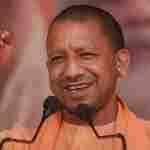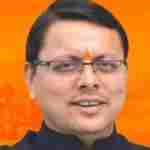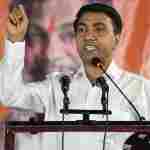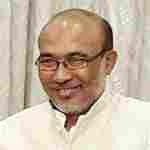
In-Depth | Assembly Polls 2022: How the BJP is trying to woo voters in UP, Punjab and three other states

In-Depth | Assembly Polls 2022: How the BJP is trying to woo voters in UP, Punjab and three other states
The political spotlight is shifting from the East and the South to the North as India gets ready to witness Assembly elections in several States in 2022. Uttar Pradesh will be at the centre of the crucial ballot battle taking place ahead of the 2024 Lok Sabha polls.
The 2014 general elections brought the Bharatiya Janata Party (BJP) back to power at the Centre, but it was the massive victory in the 2017 UP Assembly polls that cemented its position in the heartland. In 2022, the ruling party is seeking re-election in UP, hoping to break the jinx that has seen no chief minister voted back to power for a second consecutive term in around 35 years.
Meanwhile, the opposition parties are sharpening their knives against the ruling party, aiming to ride on anti-incumbency, a backward caste strategy, farmers’ protests, Covid-19 mismanagement, etc.
Though UP is being seen as the most intense and arguably most crucial battle for the BJP’s political journey, the party has also kick-started preparations for other State elections taking place next year. Assembly elections are going to take place in seven States in 2022. While Uttar Pradesh, Punjab, Uttarakhand, Goa and Manipur are scheduled to witness polling around February or March, Gujarat and Himachal Pradesh will vote later in the year.
Among the five States holding Assembly elections in the first quarter of the year, the BJP enjoys power in four — Uttar Pradesh, Uttarakhand, Goa and Manipur — while the Congress is ruling in Punjab. In 2022, the saffron party will not only try to retain power in the States it rules but also seek power in Punjab.
With the stage set, let’s take a look at the key issues surrounding the Assembly elections and decode the BJP’s election strategies:

Uttar Pradesh has the highest number of assembly constituencies in India, at 403. The State, regarded as the country’s biggest and politically most important State, is currently ruled by the BJP in alliance with the Apna Dal (Sonelal).
The two other key parties eyeing power in UP are the Samajwadi Party (SP) and the Bahujan Samaj Party (BSP). Besides, the Congress, with Priyanka Gandhi Vadra in the lead, is also looking to contest in the country’s most complex political battleground.
Also read | Political climate heats up in Uttar Pradesh as clock ticks on 2022 Assembly polls
The first round of the ABP-CVoter survey, released early in September, predicted that the BJP-led National Democratic Alliance (NDA) would see a “comfortable victory”.
However, the party will need to address a number of issues popping up in the run-up to the election to retain power in the State. The major issues in Uttar Pradesh are anti-incumbency over the handling of Covid-19, inflation, the crime rate, the law and order situation, farmers’ protests against the three farm laws brought in by the BJP-led government and alleged factionalism in the State unit.
Besides these, another major issue is the caste politics in the State as Opposition parties are targeting the BJP for its backward caste strategy. Ahead of the elections, the party is facing an antagonised Muslim block, unsure Brahmins, upset Jats and voters from Other Backward Classes (OBCs), who have traditionally supported the Samajwadi Party.
BJP’s strategy in Uttar Pradesh
The BJP government has taken several steps in the past few months to balance caste and regional aspirations. Recently, Chief Minister Yogi Adityanath inducted Jitin Prasada and six others into his Council of Ministers. Those inducted as Ministers of State are Paltu Ram, Chhatrapal Singh Gangwar, Sangeeta Balwant, Dharamveer Singh, Sanjeev Kumar and Dinesh Khatik.
Among the new ministers, Prasada is a Brahmin face, while Khatik and Ram are Scheduled Castes and Kumar is from a Scheduled Tribe. Gangwar (Kurmi), Balwant (Bind) and Singh (Prajapati) are from backward castes.
It is believed by political analysts that Prasada's induction was part of the party's efforts to woo the Brahmin community, which accounts for around 13 percent of the State's population.
Earlier, in July, Prime Minister Narendra Modi also expanded his cabinet by inducting 28 OBC leaders.
Also read | BJP, Nishad Party to fight UP elections together
The BJP-led Union government also got the Constitution (127th Amendment) Bill, passed by Parliament in August. The law gives States and union territories the power to identify and notify their own OBC list.
The party is also all set to launch its mega outreach programme, aimed at OBC communities, on October 8. It will include sub-caste specific programmes apart from 202 mega rallies, according to a report.
To woo the disgruntled farmers in western UP, the State government has announced a hike in sugarcane purchase prices for farmers. “The government has decided that for the variety of sugarcane for which Rs 325 per quintal was paid to farmers, that price has been increased to Rs 350,” Adityanath announced on September 26.
The party is already running Jan Ashirwad Yatras to reiterate the work done by the government in different areas.

The BJP is in power in all the five poll-bound States except in Punjab, where its traditional ally Shiromani Akali Dal (SAD) has quit the NDA over the controversial farm laws.
The State is ruled by the Congress, which is in turmoil after Amarinder Singh was removed as Chief Minister and party chief Navjot Singh Sidhu resigned from his post ahead of the upcoming assembly elections. Amarinder also announced that he would quit the party. On September 30, Singh made it clear that he was not joining the BJP, which is exploring its options to expand in Punjab, but said he had no intention of continuing in the Congress, which, according to him, was going downhill, with senior party leaders being completely ignored.
Amid the ongoing political crisis, the BJP is looking to gain power in the State, which will see a multi-cornered contest. Apart from the ruling Congress, the BJP will also face a tough fight from the Aam Aadmi Party and SAD-BSP alliance.
The party, which will face the election without SAD for the first time in 25 years, has some major issues to address. The first and foremost one is the ongoing farmers’ agitation against the three farm laws passed by the Central government. The party is facing the wrath of the farmers in the State, a majority of them being Sikhs.
The second major issue before the BJP is the absence of a strong leader after the end of its alliance with the SAD, which is led by former CM Parkash Singh Badal, a political heavyweight.
The lack of Sikh faces at the constituency level in the party is another issue, given the fact that it will be contesting all 117 seats in Punjab unlike the last Assembly polls, when it contested in just 23 constituencies. The BJP managed to win just three seats in the 2017 State elections.
BJP strategy in Punjab
Contesting on its own in Punjab, experts believe that the BJP is seeking to build a social coalition of the Dalits, OBCs and urban Hindus to challenge established players in State politics.
The BJP has support among urban voters in Punjab and is looking to keep them in its kitty in the upcoming polls. According to a report, the party has identified 45 seats where around 60 percent of the population is Hindu. Of these, 23 seats are those that the BJP used to contest as an alliance partner with the SAD for over two decades.
To woo the Dalit community, the party picked Vijay Sampla, its Ravidasia face, from the Dalit-dominated Doaba region, and appointed him chairman of the National Commission for Scheduled Castes with the rank of Union minister.
The party has made Gajendra Singh Shekhawat its election in-charge of Punjab. Shekhawat will be assisted by three co-in-charges: Union minister for urban and housing affairs Hardeep Singh Puri, who had unsuccessfully contested the Lok Sabha poll from Amritsar in 2019; Minister of State for external affairs Meenakshi Lekhi, who is a Punjabi-speaking leader; and home minister Amit Shah’s confidant and Lok Sabha MP Vinodbhai Chavda.
Shekhawat has been overseeing Punjab affairs for the last two years and was general secretary of the farmers’ wing before becoming a minister. Sources say the BJP expects Shekhawat’s connection with farmers’ unions in the State to help at a time when a section of the community is unhappy with the Centre’s farm laws.

Uttarakhand is also ready to elect a fresh government to its 70-member Assembly. Currently ruled by the BJP, the internal politics of the State took national stage after the resignation of two chief ministers within a year.
In March 2021, Trivendra Singh Rawat resigned as chief minister after large-scale discontent against him, after which Tirath Singh Rawat was sworn in as CM. Barely four months after taking oath, Tirath Singh Rawat also resigned from his post in July. Pushkar Singh Dhami then became the new chief minister of Uttarakhand – and the youngest at age 45.
Changing chief ministers twice in a short span has not helped the party's image, with the opposition Congress accusing it of causing “political instability” and betraying the people. The party now has an uphill task retaining power in Uttarakhand, where it has been plagued by factionalism.
The BJP had registered a thumping victory in 2017 by winning 57 of the 70 seats with a vote share of around 47 percent. In 2022, the party is set to witness a three-cornered fight with the Congress, which had won 11 seats in the last Assembly polls (vote share: 34 percent) and Arvind Kejriwal’s Aam Aadmi Party (AAP).
Like UP, Uttarakhand has had very strong anti-incumbency as it has elected alternative governments in every election since its first polls in 2002.
Although, it is yet to be seen whether the BJP will overcome its internal troubles and retain the power or lose to anti-incumbency, the first round of the ABP-CVoter survey predicts a BJP victory.
The key issues that the saffron party will face in the run-up to the elections are anti-incumbency over lack of employment opportunities, lack of healthcare facilities, and poor handling of the second wave of the Covid-19 pandemic.
The dissatisfaction among party cadres is another challenge for the party. The corruption allegations and controversy surrounding the Char Dham Devasthanam Management Bill may also influence political campaigning.
What the BJP is doing in Uttarakhand
The BJP seems to be contesting the election with PM Modi as its polling face. In a recent address, party chief JP Nadda exhorted booth level workers to connect with the masses and publicise the big development strides made by the State under the double-engine government.
In Uttarakhand, Member of Parliament Locket Chatterjee and party spokesperson RP Singh will assist election in-charge Pralhad Joshi.

Elections to the 40-member Goa Assembly are due in February 2022. The State is currently being ruled by the BJP, while the Congress sits in opposition. In the 2017 Assembly polls, Congress won the highest number of seats (17), restricting the BJP to 13 seats. However, surprising the Congress, the saffron party allied with regional parties and formed the government under the leadership of senior leader Manohar Parrikar.
The coastal State is witnessing a multi-cornered fight with the AAP, Trinamool Congress (TMC) and Shiv Sena also throwing their hats into the Assembly poll ring.
The BJP faces a tough task to win the State, where it has been in power for ten years now and faces anti-incumbency. Its allies — Vijay Sardesai’s Goa Forward Party (GFP) and Sudin Dhavalikar’s Maharashtrawadi Gomantak Party (MGP) — have walked out of the NDA. There are other challenges before the ruling party, including anger over its handling of the Covid-19 pandemic in Goa. Moreover, the party will be missing a consensus builder like the late Manohar Parrikar.
BJP strategy in Goa
For the upcoming elections in the coastal State, the BJP has given former Maharashtra Chief Minister Devendra Fadnavis, who is familiar with the State’s politics, an old role as the in-charge. He will be assisted by Union culture minister G Kishan Reddy and Surat MP Darshana Jardosh.

The people of Manipur will elect a fresh 60-member Assembly next year. The BJP had won 21 of the 60 seats in the northeastern State in the 2017 Assembly polls and formed the government with support from regional parties such as the Naga People’s Front and the National People’s Party (NPP). However, this time, it has been reported that the Conrad Sangma-led NPP will go it alone and contest the majority of seats in Manipur. At present, the NPP has four MLAs in Manipur and two of them are ministers in the BJP-led coalition government.
BJP brainstorming in Manipur
The BJP has appointed a prominent OBC face and Union Environment Minister Bhupender Yadav as its election in-charge in the northeastern State.
Recently, Home Minister Amit Shah and BJP president JP Nadda held deliberations with Manipur Chief Minister N Biren Singh and other party leaders over the upcoming assembly State polls, reported news agency PTI, citing sources. BJP general secretary (organisation) BL Santhosh, election in-charge Yadav and in-charge of party affairs in the State Sambit Patra were also present at the meeting. The BJP leaders discussed the political situation in the State.